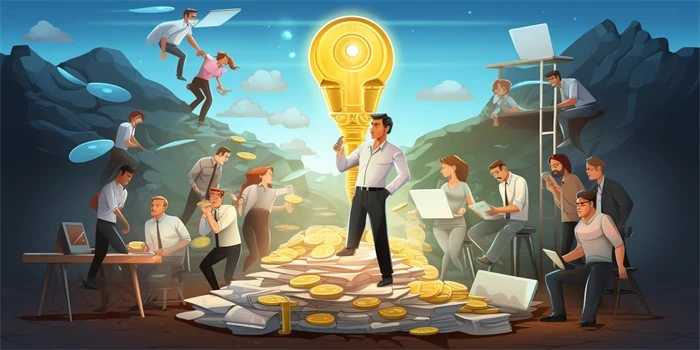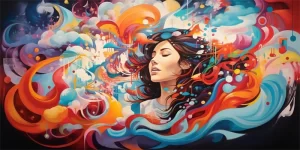YouTube has become one of the most popular platforms for artists to showcase their talent and reach a massive audience worldwide. While gaining recognition and exposure are essential, artists also need to find ways to monetize their efforts on this video-sharing platform. In this article, we will explore the various ways artists can make money off YouTube.

1. Advertisement Revenue
Artists can earn money through ads displayed on their YouTube videos. This revenue is generated based on the number of views and engagement their videos receive. YouTube places advertisements at the beginning, middle, or end of the videos, and artists earn a percentage of the ad revenue generated.
Furthermore, popular artists often have the opportunity to participate in brand collaborations or sponsored videos, which can provide additional revenue streams.
2. Channel Memberships
YouTube introduced the channel membership feature, allowing artists to offer exclusive perks to their fans in exchange for a monthly fee. Artists can provide customized emojis, exclusive content, badges, or live chat access to their channel members. This not only provides a sense of community for fans but also generates a steady income for the artists.
3. Merchandise Sales
Artists can leverage their YouTube channel to promote and sell merchandise, such as clothing, accessories, or even physical copies of their music. They can include links in their video descriptions or create dedicated merch stores on their channels, directing fans to purchase from them directly.
4. Crowdfunding
Many artists turn to crowdfunding platforms like Patreon or Kickstarter to generate financial support from their fans. They offer exclusive perks or rewards to those who contribute a certain amount. By building a loyal fan base, artists can secure a consistent income stream through regular contributions.
5. Live Performances and Tours
YouTube can serve as a platform for artists to gain exposure and attract a fan base, which can lead to opportunities for live performances and tours. By promoting their upcoming shows or selling tickets through their channel, artists can generate significant revenue from ticket sales and merchandise at concerts.
6. Licensing and Sync Deals
Artists can also monetize their music through licensing and synchronization deals. This involves granting permission for their music to be used in commercials, films, TV shows, or video games. Such agreements can provide substantial upfront payments or royalties based on the usage of their music.
7. Fan Donations
YouTube allows fans to donate directly to their favorite artists through features like Super Chat or Super Stickers. During live streams or premieres, fans can make monetary contributions in exchange for their messages or stickers to stand out in the chat, providing artists with additional revenue.
8. YouTube Premium
With YouTube Premium, subscribers can enjoy an ad-free experience while supporting their favorite creators. Artists receive a portion of the subscription revenue based on the watch time their content generates from these premium users.
9. Music Streaming Services
While YouTube primarily focuses on video content, many artists use the platform as a promotional tool to drive traffic to their music available on streaming services like Spotify, Apple Music, or Amazon Music. By increasing their streams, artists can generate income through royalties from these platforms.
10. Fan Club Memberships
Artists can create exclusive fan clubs or fan websites, where fans pay to access premium content, interact with the artist directly, or join online communities. This paid membership model provides artists with recurring revenue and a dedicated fan base.
11. Affiliate Marketing
Artists can partner with brands or online marketplaces to promote products or services in their videos. By including affiliate links in their video descriptions, artists earn a commission for every sale made through these links, providing them with an additional income source.
12. Teaching and Workshops
Artists can leverage their expertise and skills to offer online tutorials, lessons, or workshops. By creating educational content, they can attract aspiring artists willing to pay for their knowledge. This can be done through separate video releases or even live sessions with paid access.
13. Content Sponsorships
Brands may sponsor artists to create specific content related to their products or services. This can range from featuring certain products in their videos to creating branded videos or series. Artists receive compensation from these sponsorships, generating revenue while maintaining artistic integrity.
14. Royalty-free Music Libraries
Artists can create and upload original music to royalty-free music libraries, allowing other content creators to utilize their tracks in their videos. They earn royalties each time their music is licensed or purchased by fellow creators, providing a passive income stream.
15. Song Covers and Remixes
Artists can create covers or remixes of popular songs and release them on their YouTube channel. By monetizing these videos through the YouTube Content ID system, artists can earn a portion of the ad revenue generated from these covers or remixes.
In conclusion, YouTube offers numerous avenues for artists to generate income. Through advertisement revenue, channel memberships, merchandise sales, crowdfunding, live performances, licensing deals, donations, YouTube Premium, streaming services, fan club memberships, affiliate marketing, teaching, content sponsorships, royalty-free music libraries, and song covers, artists can make a living from their creativity and talent.
References:
1. Smith, J. (2019). “How Artists Make Money on YouTube.” The Balance Careers. Retrieved from [link]
2. Lipshutz, J. (2020). “How YouTube’s Director of Product Management Sees the Future of Music Video, Artists on the Platform.” Billboard. Retrieved from [link]
Author: [Author’s Name]
Image Credit: [Artist’s Name]


